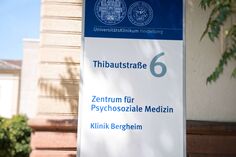Evaluation of cognitive dysfunction in patients with early or adult onset schizophrenia: From early information processing to executive functions
Patients with early onset schizophrenia have lower premorbid functioning and worse outcome than patients with adult onset. This might be due to pre-/perinatal insults ("first hit" according to Keshavan´s three hit model) causing lesions that interact with brain development occurring later on. The bottom-up hypothesis in schizophrenia suggests that sensory-level dysfunction causes downstream deficits of higher processes due to inaccurate information reaching the higher centres. Thus known deficits in e.g. executive functions might be partly explained by sensory processing deficits caused by the first hit. In schizophrenia, sensory deficits are suggested for the magnocellular (M) visual system (in contrast to intact parvocellular (P) function).
The aim of this study is to challenge an integration of the three hit model and the bottom-up hypothesis in schizophrenia by systematic investigation of three successive levels of visual information processing in patients with either adult (>25y) or early (≤18y) disease onset and matched healthy controls. It is hypothesized that in patients with early onset schizophrenia, pre-/perinatal insults lead to impairment of the M system (maturing at this age) and to consecutive spatial working memory (WM) deficits, but leave the P system and object WM relatively preserved. M/P function (sensory level) is assessed by Visual Evoked Potentials, completion of fragmentary visual information (intermediate level) by the Perceptual Closure Task, and spatial/object WM and response inhibition by Delayed Response Tasks and the Continuous Performance Test.



